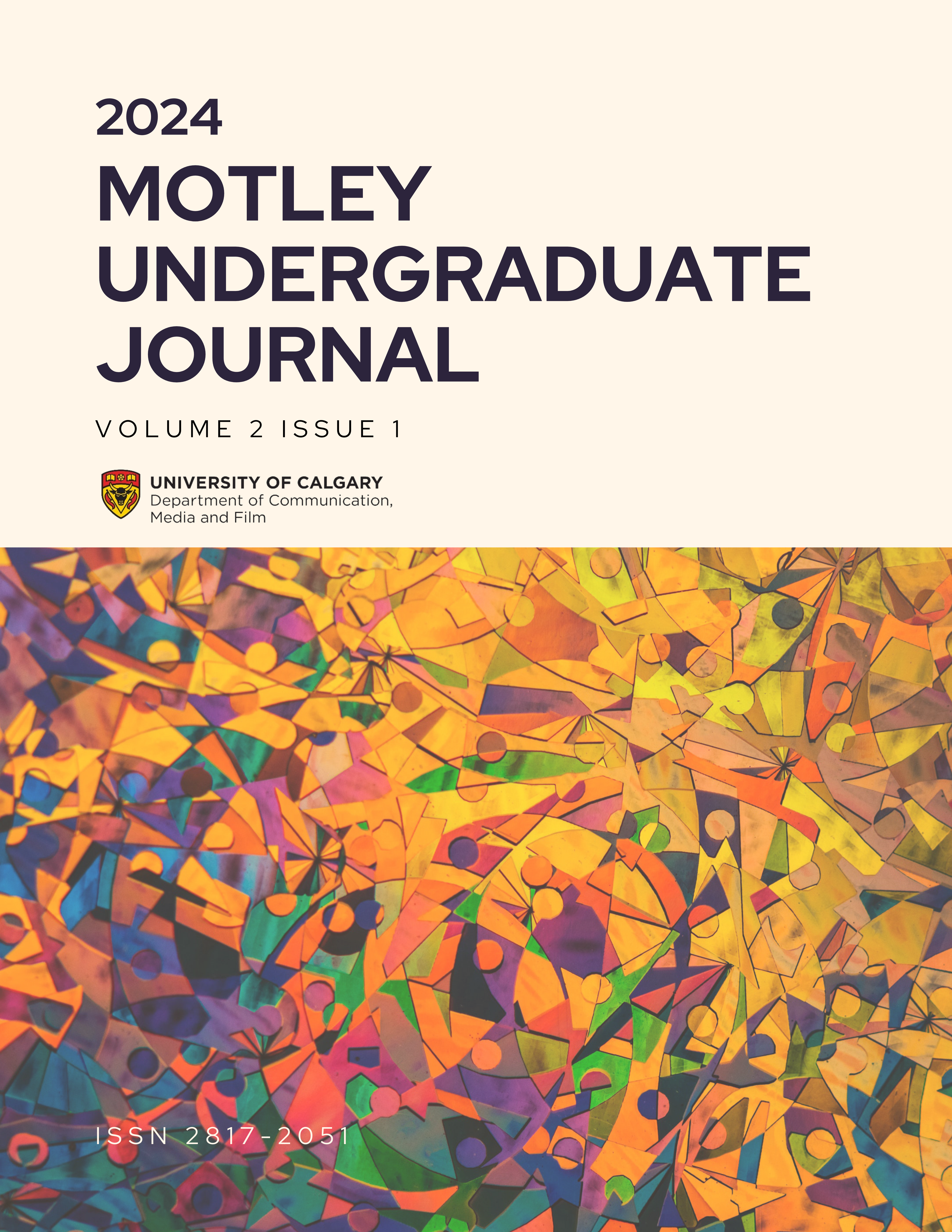Beyond Norms and Realities
Reading Queer in Everything Everywhere All at Once
DOI:
https://doi.org/10.55016/ojs/muj.v2i1.78788Keywords:
Queer theory, Asian American Representation, Model Minority MythAbstract
This paper examines the film Everything Everywhere All at Once, portraying a Chinese-American family navigating complex familial dynamics. The film, featuring stellar performances by Ke Huy Quan, Michelle Yeoh, and Jamie Lee Curtis, garnered Oscars and marked a historic win for Asian women in the Best Actress category. Beyond its sci-fi front, the movie transcends genre boundaries, contributing significantly to new queer cinema. This paper argues that the film disrupts essentialist notions of race, sexuality, and gender by exploring diverse themes. Drawing from queer theory, this paper analyzes the film’s problematization of gender norms and Asian American stereotypes, as well as the encouragement of critical spectatorship in viewers. The analysis identifies the film’s deliberate use of queer codes, inviting viewers to think beyond conventions. The film confuses normative thinking, as demonstrated through Ke Huy Quan’s character, Waymond, who blurred assignments of masculinity and femininity. Finally, the analysis extends this critique to Asian American representation, interrogating stereotypes associated with the model minority myth. Through the film’s well-crafted storytelling and excellent performances by actors, this paper’s analysis demonstrates how a queer reading can encourage thinking beyond ‘normal.’
References
Azhar, S., Alvarez, A. R. G., Farina, A. S. J., & Klumpner, S. (2021). “You’re So Exotic Looking”: An Intersectional Analysis of Asian American and Pacific Islander Stereotypes. Affilia, 36(3), 282–301. https://doi.org/10.1177/08861099211001460
Benshoff, H. M., & Griffin, S. (Eds.). (2004). Queer cinema: The film reader. Psychology Press.
Butler, J. (2006). Gender trouble : feminism and the subversion of identity. Routledge. [https://doi.org/10.4324/9780203824979] (https://doi.org/10.4324/9780203824979)
Coe, J. (2023). Everything Everywhere All at Once and the Intimate Public of Asian American Cinema. Film Quarterly, 76(4), 35–45. https://doi.org/10.1525/fq.2023.76.4.35
Cover, R., & Milne, C. (2023). The “Bury your Gays” trope in contemporary television: Generational shifts in production responses to audience dissent. The Journal of Popular Culture, 56(5-6), 810-823.
Davies, J., & Smith, C. R. (2000). Gender, Ethnicity, and Sexuality in Contemporary American Film. In Routledge eBooks. Routledge. https://doi.org/10.4324/9781315063089
Donovan, S. (2016). Becoming Unknown: Hannibal and Queer Epistemology. Queer Film and Television, 59, 38-62.
Doty, A. (1998). Chapter 15: Queer Theory. In Hill, J. & Gibson, P. C. (Eds.), The Oxford guide to film studies (pp. 148-151). Oxford University Press.
Green, A. I. (2002). Gay but not queer: Toward a post-queer study of sexuality. Theory and society, 31(4), 521-545.
Heron, B. A. (2019). Neoliberalism and social work regulation: Implications for epistemic resistance. Canadian Social Work Review, 36(1), 65-81.
Kirsch, M. (2020). Queer theory 1. In Routledge Handbook of Social and Cultural Theory (pp. 265-286). Routledge.
Kwan, D. & Scheinert, D. (Director). (2022). Everything Everywhere All at Once [Film]. AGBO, Ley Line Entertainment, IAC Inc, IAC Films.
Lee, B. (2023, March 13). Everything everywhere all at once triumphs at Oscars with major sweep. The Guardian. https://www.theguardian.com/film/2023/mar/12/everything-everywhere-all-at-once-oscars-2023-winner-awards-best-picture
Li-Vollmer, M., & LaPointe, M. E. (2003). Gender Transgression and Villainy in Animated Film. Popular Communication, 1(2), 89–109. https://doi.org/10.1207/S15405710PC0102_2
McNealy, G. (2021). Queering the gaze: visualizing desire in Lacanian film theory. Whatever. A Transdisciplinary Journal of Queer Theories and Studies, 4, 433-466.
Morrison, J. (2006). Still New, Still Queer, Still Cinema?. GLQ: A Journal of Lesbian and Gay Studies, 12(1), 135-146.
Ponce, M. J. (2021). Between the Heteronormative Model Minority and the Homonormative LGBTQ Subject: Historicizing Contemporary Queer Asian American Literature. In B. Huang & V. R. Mendoza (Eds.), Asian American Literature in Transition, 1996–2020 (Vol. 4, pp. 99–117). Cambridge University Press. https://doi.org/10.1017/9781108914109.006
Prentice, D. A., & Carranza, E. (2002). What women should be, shouldn't be, are allowed to be, and don't have to be: The contents of prescriptive gender stereotypes. Psychology of Women Quarterly, 26(4), 269–281. https://doi.org/10.1111/1471-6402.t01-1-00066
Toabnani, A. (2023). An Analysis of the Film "Everything Everywhere All at Once": Nihilism and Multiversal Metaphors (Literature Semiotics). Journal of Education, Linguistics, Literature and Language Teaching, 6(01), 37-45.
Shek, Y. L. (2007). Asian American Masculinity: A Review of the Literature. The Journal of Men’s Studies, 14(3), 379–391. https://doi.org/10.3149/jms.1403.379
Worthen, M. G. (2021). Gender and deviance. In Sexual Deviance and Society (pp. 99-122). Routledge.
Downloads
Published
How to Cite
Issue
Section
License
Copyright (c) 2024 Thomas Tri

This work is licensed under a Creative Commons Attribution-ShareAlike 4.0 International License.
Copyright Policy
The Motley Undergraduate Journal is an Open Access article distributed under the terms of the Creative Commons Attribution 4.0 Share-Alike License. Under this license, users are free to share (copy, distribute and transmit) and remix (adapt) the contribution, including for commercial purposes, providing that the original work is properly cited. Under Creative Commons, authors retain copyright in their articles.
Author Self Archiving Policy
Authors are permitted to post their work online in institutional/disciplinary repositories or on their own websites. Pre-print versions posted online should include a citation and link to the final published version in The Motley Undergraduate Journal as soon as the issue is available; post-print versions (including the final publisher's PDF) should include a citation and link to the journal's website.

